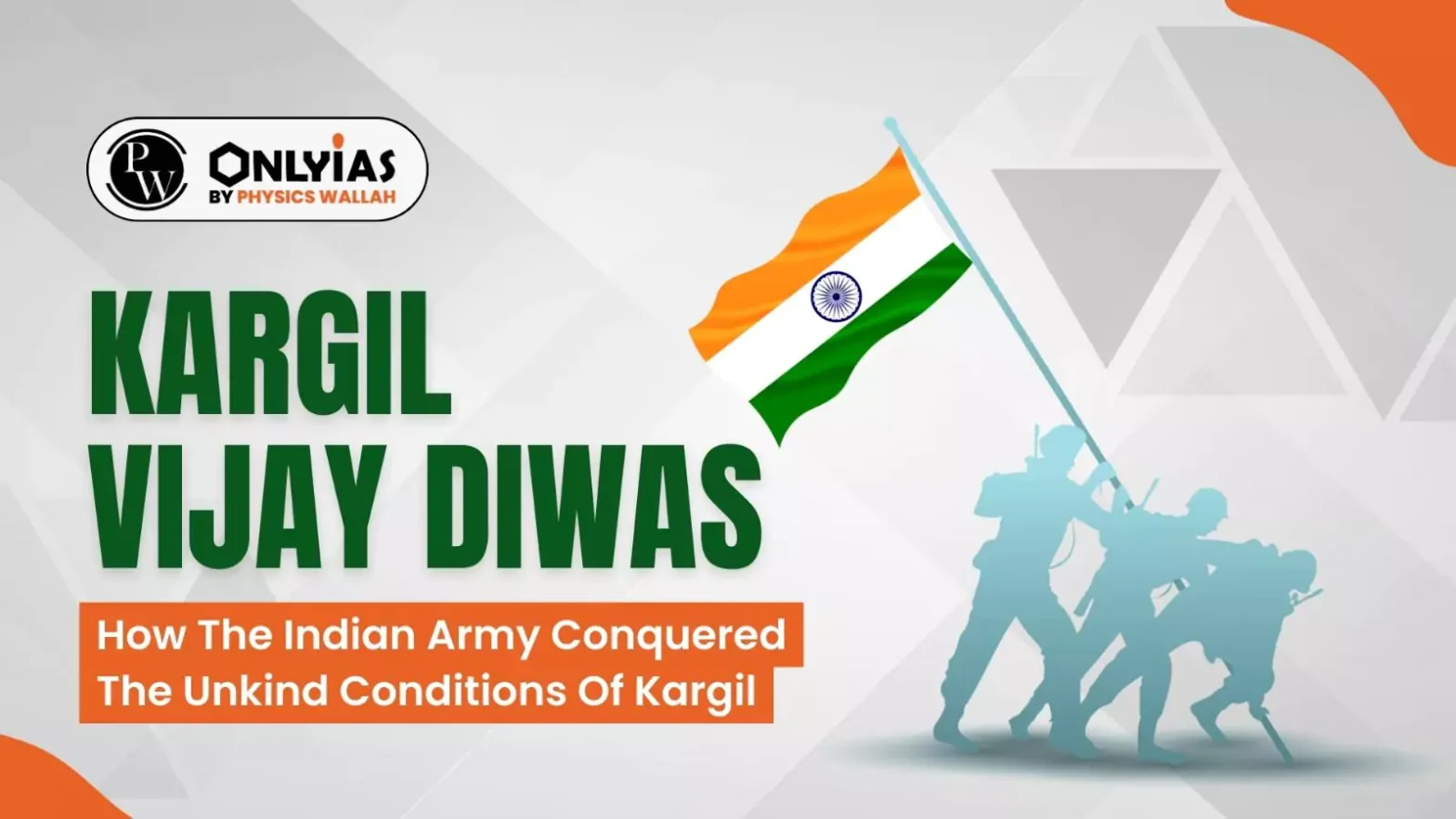India’s victory in the Kargil War was as much against the terrain and the climate, as it was against Pakistani combatants. We tell you how our soldiers braved – and conquered – Kargil’s hostile conditions.
| Relevancy for Prelims: Kargil War, Kargil Vijay Diwas 2024, Operation Vijay, etc.
Relevancy for Mains: Impact of the Kargil War on India’s defense policies, etc. |
Kargil Vijay Diwas
- Tributes on Kargil Vijay Diwas: Leaders across India’s political spectrum paid tributes to the armed forces and fallen martyrs. The occasion marked the 24th anniversary of Kargil Vijay Diwas.
- Operation Vijay: The Indian Army sent a message not only to Pakistan but to the whole world that when it comes to our national interests, our Army will not back down at any cost.
Enroll now for UPSC Online Course
The Kargil War
- End of the Kargil War: Ended on July 26, 1999 with eviction of the last remaining Pakistani troops and infiltrators from positions on the Indian side of the Line of Control (LoC).
- Trigger of the Conflict: Infiltrators from Pakistan crossed the LoC and occupied high positions in Ladakh’s Kargil district.
- Realization of the Scale: Over the first few weeks, the scale of the invasion revealed the undeniable role of the Pakistani state. Indian forces began efforts to recapture critical positions.
- Recapture Efforts: Complete withdrawal of all Pakistani regular and irregular troops from Kargil announced on July 26, 1999.
Challenging Conditions
- Enemy Infiltrators: Supported by non-stop shelling from Pakistani artillery across the border.
- Geography: Located at the northern edge of the LoC, 200 km northeast of Srinagar, and 230 km west of Leh.
- Enemy Advantage: Pakistani forces occupied high positions overlooking Indian positions.
- High Altitude Warfare: The high altitude environment determined the nature and conduct of the campaign.
- Physiological Effects: Acute mountain sickness, headaches, nausea, appetite loss, muscular weakness, general fatigue. Severe impact on human body, posing logistical and strategic challenges.
- Crippling Cold: Winter temperatures as low as (-)30 degrees Celsius where guns jam, operators expend great energy to keep warm.
How the Army Conquered Kargil’s Conditions
- Army’s Adaptations: Acclimatisation and training programs initiated to better prepare soldiers for high-altitude conditions.
- Better cold-weather gear procured, though inadequacies persisted.
- High-Altitude Assault Techniques: Shifted from daytime frontal attacks to small groups scaling near-vertical terrain and honed techniques for high-altitude combat.
- Effective Use of Firepower: Artillery support coordination overwhelming firepower coordinated with daring manoeuvres.
Check Out UPSC Modules From PW Store
Conclusion
Kargil Vijay Diwas commemorates India’s resilience and sacrifice, showcasing the armed forces’ adaptability and bravery in overcoming high-altitude challenges to defend national interests.
![]() 26 Jul 2024
26 Jul 2024


